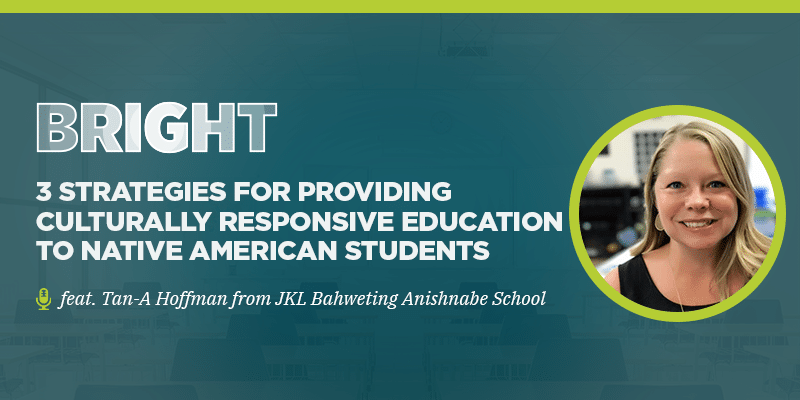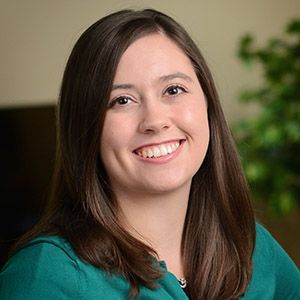…Or listen on Apple, Spotify, Google, or another platform. Alternatively, you can read along with the transcript.
Wow! I’m so excited to share with you the first episode of our third season of the BRIGHT podcast.
This season, we’re trying something new. Our theme for this season is “3 Strategies.” Basically, what that means is we talk to educators who are experts on a certain topic and ask them to distill their wisdom into the top three things they want the rest of us to know.
To kick off Season 3, I have someone really special to introduce to you. Her name is Tan-A Hoffman, and she’s a second-grade teacher at JKL Bahweting Anishnabe School and a 2020-21 regional teacher of the year, representing her geographic area in Michigan’s upper peninsula.
There were many ways that my conversation with Tan-A challenged me to think more deeply.
“Let’s look at our history books,” she said. “If I’m not from a picture of the 1830s, I am a caricature of myself… I am Anishinaabe not because of the way I look but because of my heart, the things that I know, and the cultural beliefs that I then follow. So, that’s a big deal. When we think about a classroom, erasing these stereotypes is super important because we are invisible in your classroom.”
We are invisible in your classroom.
This statement lingered in my mind for weeks after our initial conversation. Tan-A has blonde hair and blue eyes. She told me that she didn’t get over her “Pocahontas complex” until her early 40s.
“As teachers,” she continued, “it’s our responsibility to break down those barriers to help students understand that we are not the past. We are the present… It’s really important that we educate students on the real American history… It matters. It matters to me. It matters to the students in my classroom, and it matters to the communities in which they live.”
We are not the past. We are the present.
In this episode of the BRIGHT podcast, Tan-A shares some incredible stories, a brief bit of history, and three strategies for providing culturally responsive education to Native American students.
You can listen to the full conversation using the audio player above by subscribing to the BRIGHT podcast in your app-of-choice (find us on Apple, Spotify, Google, and more) or by reading along in the transcript.
Here’s a sneak peek at our conversation:
Related resources
- Read: Anishinaabe resource manual, created in 2021 by the Confederation of Michigan Tribal Education Departments
- Read: Culturally responsive teaching and the brain: Promoting authentic engagement and rigor among culturally and linguistically diverse students by Zaretta L. Hammond
- Watch: Rita Pierson: Every child needs a champion (TED Talk)
- Watch: Read, Write, ROAR!, an English language arts program for kindergarten through third-grade learners hosted on the Michigan Learning Channel and PBS (Tan-A is one of the program’s third-grade teachers!)
- Learn: The Confederation of Michigan Tribal Education Departments
- Learn: Michigan Indian Education Council
- Learn: Anishinaabemdaa, a website dedicated to resources about learning Anishinaabemowin, the language of the Anishinaabe nation







